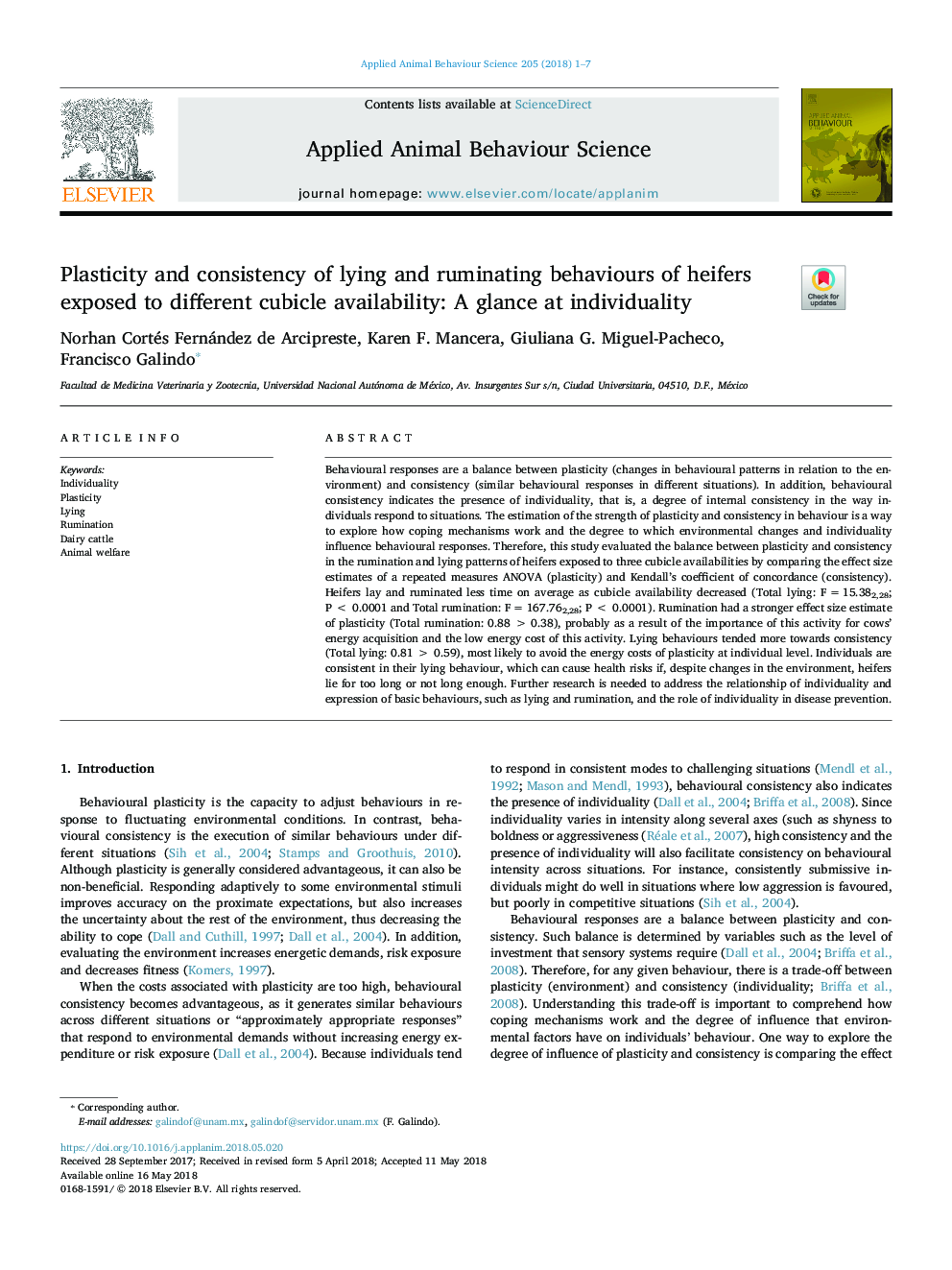| Article ID | Journal | Published Year | Pages | File Type |
|---|---|---|---|---|
| 8882701 | Applied Animal Behaviour Science | 2018 | 7 Pages |
Abstract
Behavioural responses are a balance between plasticity (changes in behavioural patterns in relation to the environment) and consistency (similar behavioural responses in different situations). In addition, behavioural consistency indicates the presence of individuality, that is, a degree of internal consistency in the way individuals respond to situations. The estimation of the strength of plasticity and consistency in behaviour is a way to explore how coping mechanisms work and the degree to which environmental changes and individuality influence behavioural responses. Therefore, this study evaluated the balance between plasticity and consistency in the rumination and lying patterns of heifers exposed to three cubicle availabilities by comparing the effect size estimates of a repeated measures ANOVA (plasticity) and Kendall's coefficient of concordance (consistency). Heifers lay and ruminated less time on average as cubicle availability decreased (Total lying: Fâ¯=â¯15.382,28; Pâ¯<â¯0.0001 and Total rumination: Fâ¯=â¯167.762,28; Pâ¯<â¯0.0001). Rumination had a stronger effect size estimate of plasticity (Total rumination: 0.88â¯>â¯0.38), probably as a result of the importance of this activity for cows' energy acquisition and the low energy cost of this activity. Lying behaviours tended more towards consistency (Total lying: 0.81â¯>â¯0.59), most likely to avoid the energy costs of plasticity at individual level. Individuals are consistent in their lying behaviour, which can cause health risks if, despite changes in the environment, heifers lie for too long or not long enough. Further research is needed to address the relationship of individuality and expression of basic behaviours, such as lying and rumination, and the role of individuality in disease prevention.
Related Topics
Life Sciences
Agricultural and Biological Sciences
Animal Science and Zoology
Authors
Norhan Cortés Fernández de Arcipreste, Karen F. Mancera, Giuliana G. Miguel-Pacheco, Francisco Galindo,
